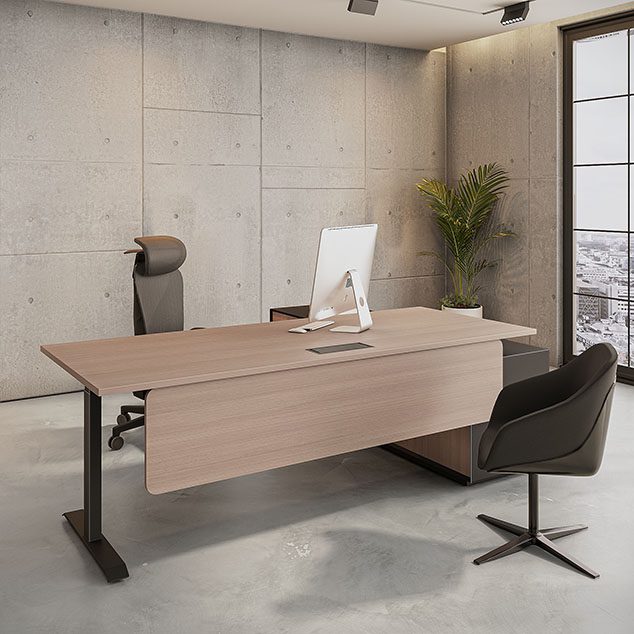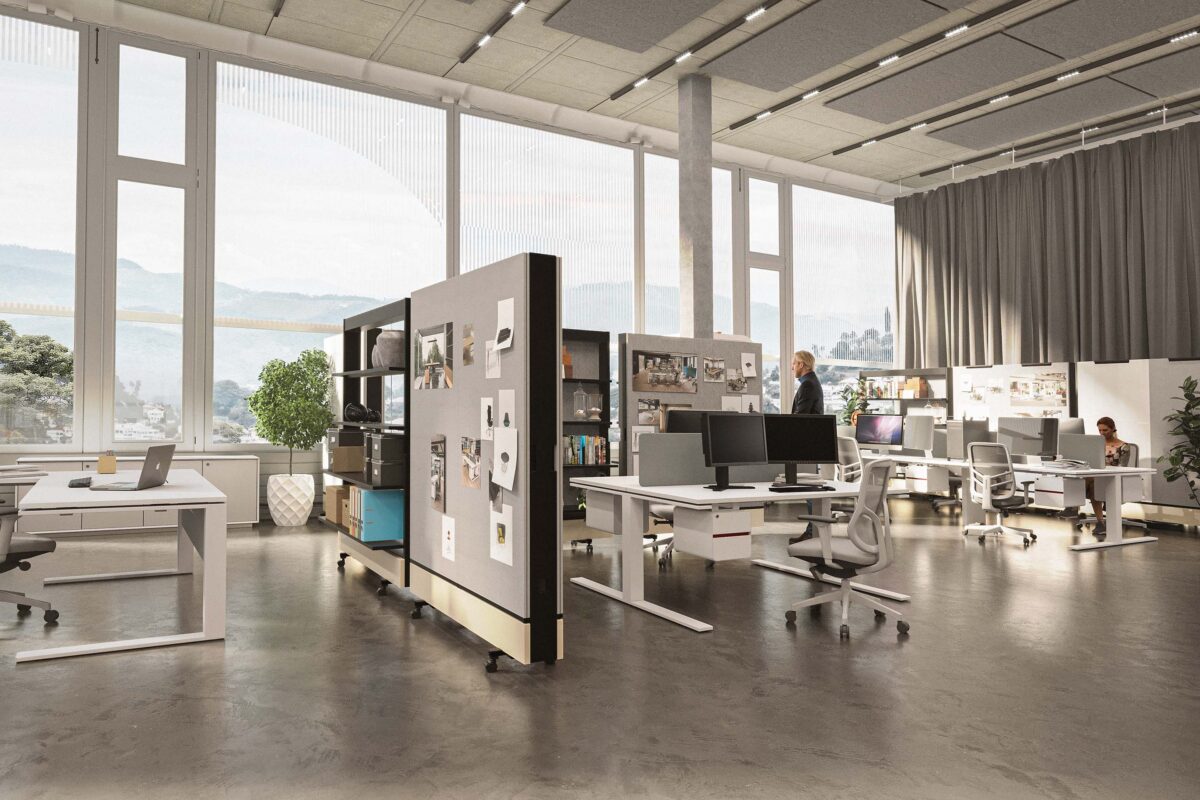Modern vs. Classic: Designing a High-End Executive Office Suite

Modern vs. Classic: Designing a High-End Executive Office Suite
Your office is more than just some workspace; it is a real statement about who you are and how you lead. Every choice reflects your values, and the right executive desk shapes the whole space around you, affects how productive you feel, and your leadership style. See how modern and classic desks bring different vibes to fancy office setups and choose which one suits you the best.
Modern Executive Desks
What Defines a Modern Executive Desk
Modern executive desks fit right into the world of busy, always-on professionals. They blend good looks with fresh ideas and real practicality. You often find them with:
- Clean lines, streamlined shapes with minimal detailing.
- Materials like glass, metal, engineered wood, and matte finishes.
- Built-in tech makes things easier. USB ports in the desk and cable setups stay out of sight.
For instance, the Gravita Executive Desk’s levitating style creates a floating, elegant feel, and the Ergo Executive Desk has an adjustable height that adapts well to ergonomics.
Best Uses and Ideal Office Settings
Modern executive desks shine in places that focus on working together, being adaptable, and developing new ideas:
- Tech and creative firms: open floor plans, bright lights, and digital setup.
- Executive suites with minimalist aesthetics: clean, minimalist look, and smooth tops.
- Leadership spaces: Where productivity lines up with a sense of calm style.
Modern styles like the B52 Executive Desk have big side cabinets, and storage is built right in, ideal for individuals in charge who like things neat and straightforward.
Styling a Modern Executive Office
A modern workspace that feels balanced:
- Use neutral colors, such as soft grays or plain whites and blacks, mostly.
- Add open shelves around, or linear lights that run along the edges and indoor plants.
- Match up your big executive desk with an ergonomic chair with a high back for support.
Ultimately, you get a spot that sparks ideas and keeps you locked in. Form meets function there.
Classic Executive Desks
What Defines a Classic Executive Desk
Classic executive desks show off craftsmanship, tradition, and gravitas. These things are made to stick around for generations, and get defined by:
- Rich woods, mahogany, walnut, or oak.
- Detailed work like carved legs, beveled edges, and leather inlays.
- Sturdy frames and dimensions give plenty of room to work with.
Desks like the MI5 executive desk or U2 executive desk exemplify this look; their construction feels timeless, but they still fit right into modern leadership spots.
Where Classic Desks Work Best
Classic designs fit right where the brand leans on authority and heritage.
- Private offices and boardrooms: Presence counts almost as much as how things perform.
- Law firms, financial institutions, and consulting spaces: the vibe needs to build trust and confidence.
- Leadership suites: go for warmth and texture and a quiet strength.
Styling a Classic Office Space
To boost the appeal of classic style:
- Pair it with leather executive chairs, vintage bookcases, and brass desk lamps.
- Add texture by layering rugs, hanging framed art, or picking up antique accessories.
How to Choose the Right Executive Desk
Picking the right executive desk comes down to how you work daily and the energy you want that space to give off. Here’s how to make the right choice:
- Match your leadership style: If you like agility and openness, pick something modern or classic pieces for legacy and authority.
- Consider ergonomics: Designs that adjust in height, like the height-adjustable desk, reduce fatigue and help you stay focused longer.
- Think about materials: Real wood brings warmth to the room, engineered finishes give you precision, and they last.
- Align with space and lighting: Lighter desks can make small areas feel bigger, while darker woods add depth in larger rooms.
- Plan for long-term value: A good desk is not just an expense but an investment in your productivity.
The desk should fit your own rhythm, how you think things through, create, and lead.
Read Also: Modern vs. Classic: Which Office Furniture Style Fits Your Company Culture?
Designing Your Executive Office with Confidence
Your office should feel part of your purpose, not just some fancy display. Picking the right executive desk gets that whole narrative rolling. You might be into sleek modern design or classic solid build. At Urban 411, we believe design has to fit who you are. We mix up the looks, the practical side, and your own vibe, which helps leaders put together offices that seem on purpose, one that sparks. We aren’t selling just desks, we set up spaces where thoughts take off, people link up, and leading feels natural.
FAQs
1. What makes a modern executive desk different from a classic one?
Modern executive desks focus on sleek design, tech integration, and ergonomic efficiency, while classic desks emphasize craftsmanship, wood detailing, and timeless authority.
2. Which materials are best for a high-end executive desk?
Materials like glass, metal, or engineered wood work best for modern styles. For classic designs, choose solid woods such as mahogany, walnut, or oak for durability and prestige.
3. How do I choose the right executive desk for my office?
Consider your workspace size, leadership style, and daily tasks. Modern desks suit open, tech-oriented spaces, while classic options fit private or traditional offices.
4. How does an executive desk impact productivity and leadership image?
A well-chosen executive desk enhances comfort, organization, and focus — projecting professionalism and reinforcing your authority in the workspace.



